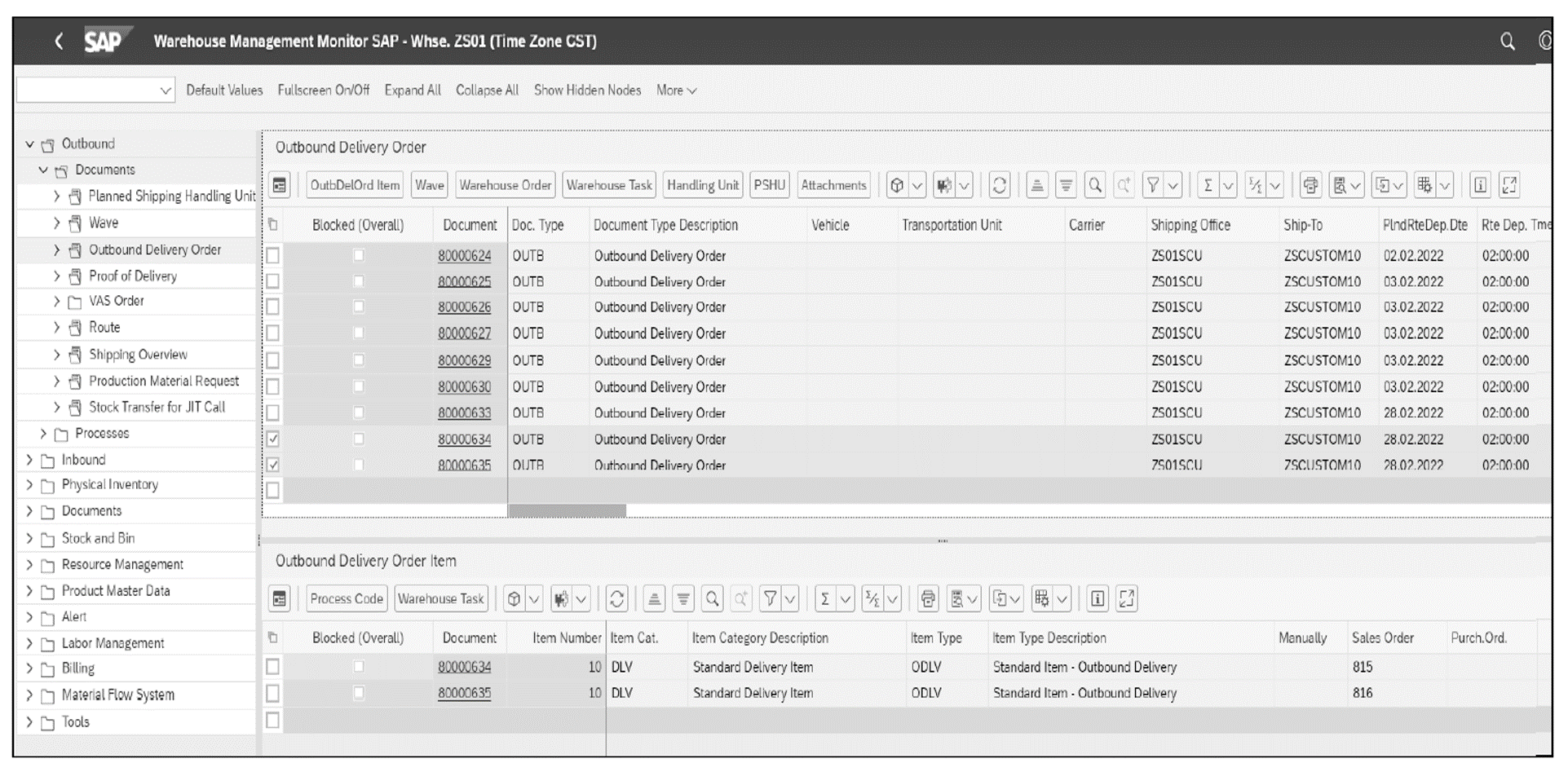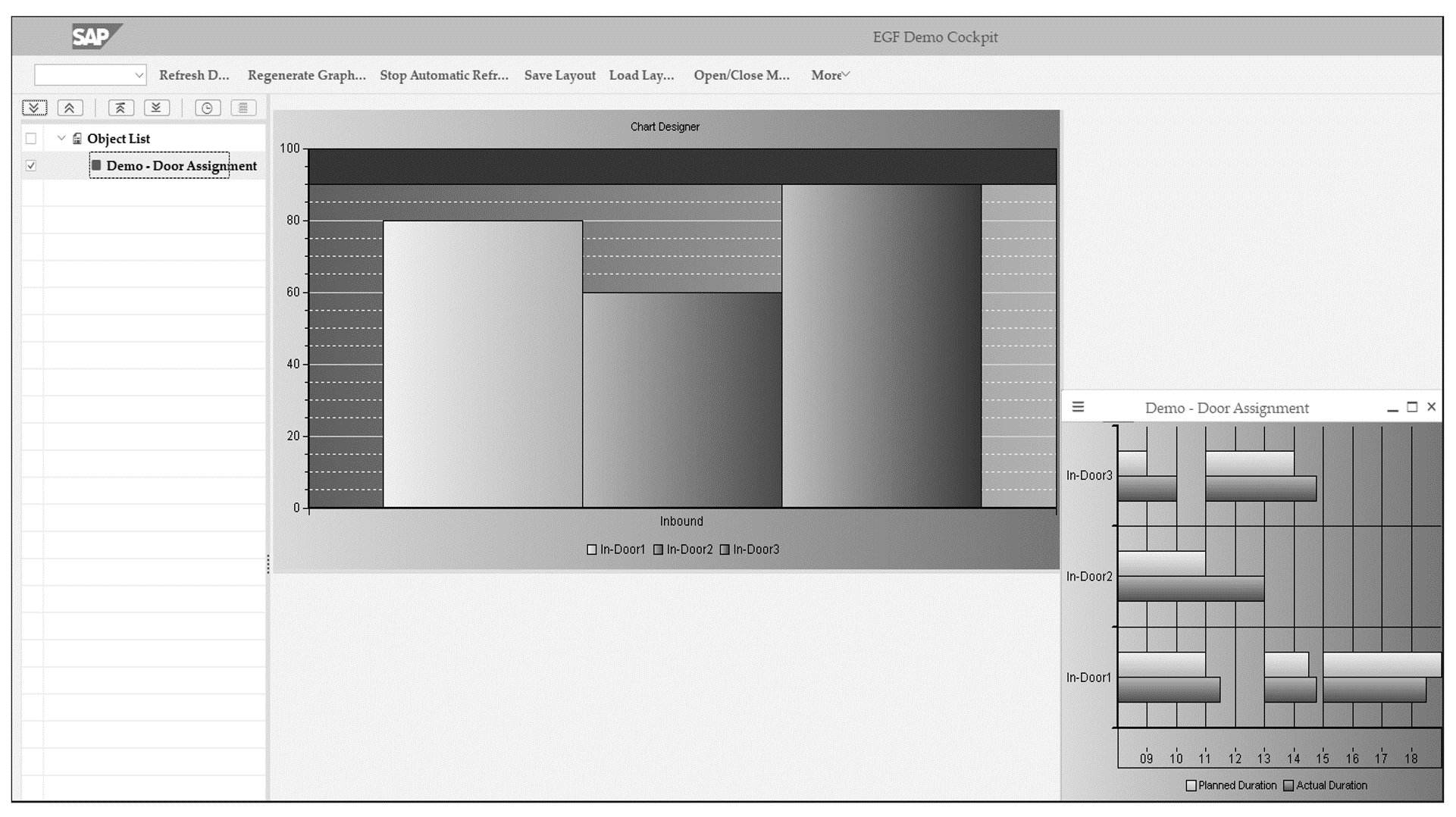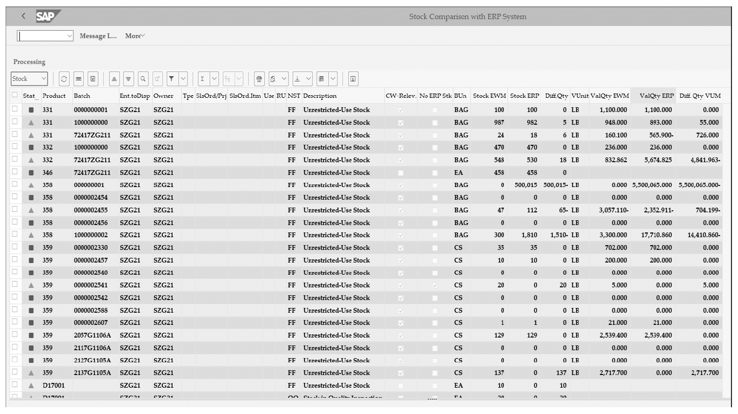The reporting capabilities for embedded EWM build on those in the standalone, decentralized SAP EWM system.
In SAP S/4HANA, the introduction of new apps and enhancements to existing apps allow you to access data in one place and to customize reports according to your needs without having to use multiple transactions.
We discuss three key reporting features of embedded EWM in SAP S/4HANA in this post.
The Warehouse Monitor
The warehouse monitor is used to view the current status of any process in the warehouse. In the figure below, you can see the multiple nodes for reporting on the left side; the right side displays the results of any of the reports. The section below the list of documents usually shows drilldown information.

Another important feature is the ability to execute some functions for inbound, outbound, wave, warehouse task, and resource management without having to navigate to the corresponding transaction. The warehouse monitor in embedded EWM represents the most important source of information and reporting because, instead of having information separated in different places for reporting, all information is available for viewing in one place.
For SAP S/4HANA, the warehouse monitor has been enhanced with new nodes, such as shifts and time attendance in labor management.
The Warehouse Cockpit
The warehouse cockpit is used to collect performance data and to present the data using a graphical layout, as shown in the next figure. The warehouse cockpit provides dashboard-level reporting for leadership in the organization. Many different measurement services can be used and set to show the status, and even the refresh period can be adjusted.

Stock Comparison
The stock comparison report reads inventories in SAP S/4HANA at both the inventory management level (including batches) and at the embedded EWM level and provides the deltas for further analysis.
While comparing key figures, you should also consider the messages in the queue between SAP S/4HANA and decentralized SAP EWM.
10
The stock comparison report allows you to implement corrections to the inventory, assuming that the values in the warehouse are accurate, and to send the corrections to the SAP S/4HANA logistics' lines of business. In the figure below, the columns with the corresponding inventory for each system are compared. A green status in the first column means that everything is as expected, and the yellow status means the quantity can be adjusted based on the inventory booking in the warehouse.

Editor’s note: This post has been adapted from a section of the book Logistics with SAP S/4HANA: An Introduction by Deb Bhattacharjee, Vishal Khandalkar, Falguni Thompson, and Guillermo B. Vazquez. Deb is a Deloitte principal and partner a thought leader in supply chain strategy, supply chain planning, and inventory planning and management. Vishal is a senior technology transformation leader at Deloitte. Falguni is a managing director at Deloitte, where she is a leader in digital transformation within Deloitte’s Enterprise Performance offering. Guillermo is a senior technology executive, leading multimillion-dollar SAP global programs with Fortune 500 companies.
This post was originally published 11/2022.



Comments